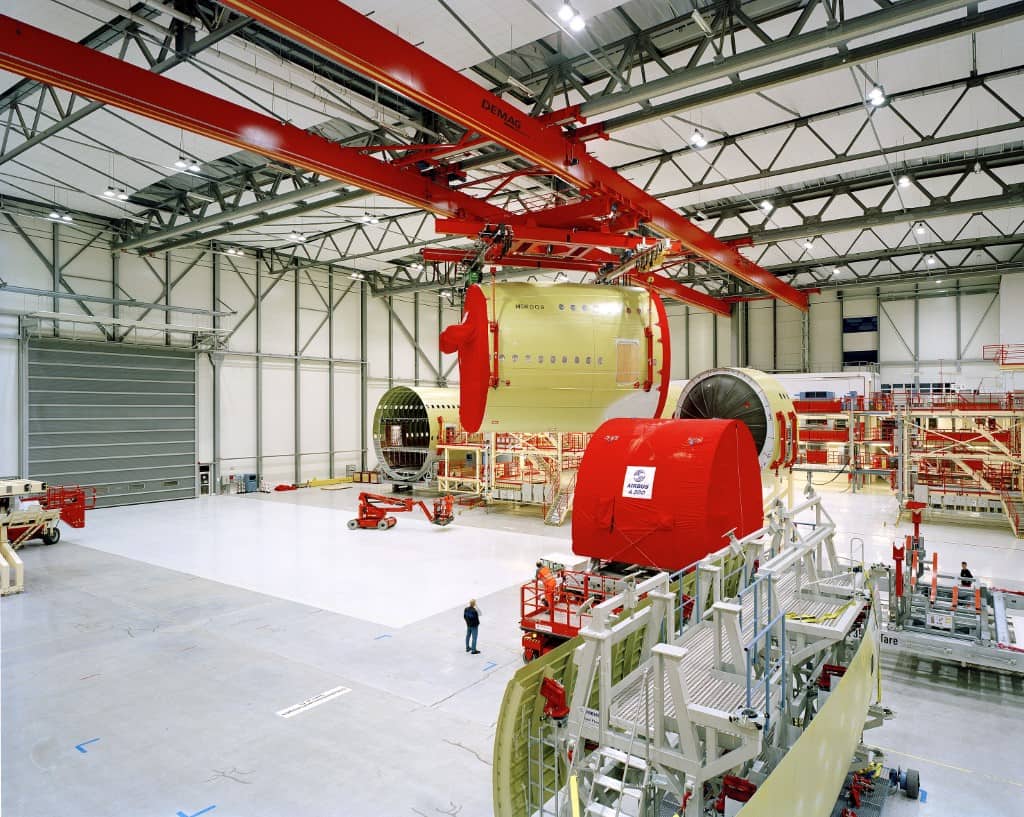In the world of aerospace manufacturing, cranes play a crucial role in building the skies. These powerful machines are responsible for lifting and moving heavy components, ensuring the smooth assembly of aircraft and spacecraft. From the construction of massive wings to the delicate placement of intricate electronics, cranes are the unsung heroes behind the creation of the modern aerospace industry.
The Role of Cranes in Aerospace Manufacturing
Cranes play a crucial role in aerospace manufacturing, facilitating the movement and positioning of heavy components and equipment. With the increasing size and complexity of aircraft, cranes are essential for lifting and installing large sections, such as wings and fuselages. They provide the necessary strength and precision to ensure safe and accurate placement of these components during assembly. Additionally, cranes are used for transporting engines, landing gear, and other critical parts within the manufacturing facility. Their versatility allows for efficient and streamlined production processes, reducing the time and effort required for manual handling. Overall, cranes are indispensable tools in aerospace manufacturing, enabling the construction of advanced and sophisticated aircraft.
Types of Cranes Used in Aerospace Manufacturing

There are several types of cranes that are commonly used in aerospace manufacturing. One of the most common types is the overhead crane, which is typically used for lifting and moving heavy components and equipment. These cranes are often equipped with specialized lifting attachments, such as spreader bars or vacuum lifters, to ensure safe and efficient handling of delicate aerospace parts. Another type of crane that is commonly used in aerospace manufacturing is the gantry crane. Gantry cranes are similar to overhead cranes, but they are supported by a framework that allows them to move along a track. This makes them ideal for moving heavy components across large manufacturing floors. Additionally, jib cranes are often used in aerospace manufacturing for tasks such as lifting and positioning smaller components or tools. These cranes have a horizontal arm that can rotate, allowing for precise and controlled movements. Overall, the use of cranes in aerospace manufacturing is essential for ensuring the safe and efficient handling of heavy and delicate components.
Safety Considerations for Crane Operations in Aerospace Manufacturing
Safety is of utmost importance in crane operations in aerospace manufacturing. The nature of the aerospace industry requires strict adherence to safety protocols to prevent accidents and ensure the well-being of workers. One key consideration is the proper training and certification of crane operators. They must be knowledgeable about the specific requirements and procedures involved in aerospace manufacturing. Additionally, regular inspections and maintenance of cranes are essential to identify any potential issues or malfunctions that could compromise safety. Adequate communication and coordination between crane operators and other personnel is also crucial to prevent accidents and ensure a smooth workflow. Overall, prioritizing safety in crane operations is vital to maintain a safe working environment in aerospace manufacturing.
Efficiency and Productivity: How Cranes Improve Aerospace Manufacturing Processes
Cranes play a crucial role in improving efficiency and productivity in aerospace manufacturing processes. With their ability to lift heavy loads and move them with precision, cranes enable manufacturers to handle large and complex components with ease. This not only saves time but also reduces the risk of damage to the components. Additionally, cranes allow for quick and efficient assembly and disassembly of aircraft parts, streamlining the manufacturing process. By eliminating the need for manual lifting and transportation, cranes also help reduce the physical strain on workers, improving overall safety and productivity in the aerospace industry. Overall, cranes are indispensable tools that significantly enhance efficiency and productivity in aerospace manufacturing.
Challenges and Innovations in Crane Technology for Aerospace Manufacturing
Crane technology plays a crucial role in aerospace manufacturing, but it also presents several challenges that need to be addressed. One of the main challenges is the need for cranes to handle heavy and delicate components with precision and care. Aerospace manufacturing involves the assembly of large and complex structures, such as aircraft wings and fuselages, which require cranes with high lifting capacities and advanced control systems. Additionally, the limited space in aerospace manufacturing facilities poses a challenge for crane operators, as they need to maneuver the cranes in tight spaces without causing any damage to the surrounding equipment. To overcome these challenges, innovative solutions such as intelligent control systems and advanced safety features are being developed to enhance crane technology in aerospace manufacturing.
Future Trends in Crane Usage for Aerospace Manufacturing
The aerospace manufacturing industry is constantly evolving, and with it, the need for efficient and reliable crane usage. As technology advances, so does the demand for cranes that can handle larger and heavier loads. In the future, we can expect to see cranes equipped with advanced automation and robotics capabilities, allowing for more precise and efficient lifting and positioning of aerospace components. Additionally, there will likely be a greater emphasis on safety features, such as collision avoidance systems and remote monitoring capabilities. With the increasing complexity of aerospace manufacturing processes, the role of cranes will continue to be crucial in ensuring smooth and efficient operations.
Conclusion
In conclusion, cranes play a crucial role in the aerospace manufacturing industry, allowing for the efficient and safe movement of heavy components and equipment. The use of cranes has significantly improved productivity and reduced the risk of accidents in this high-stakes industry. As technology continues to advance, we can expect to see even more innovative and specialized cranes being developed to meet the unique needs of aerospace manufacturing.
What is the role of cranes in aerospace manufacturing?
Cranes play a crucial role in aerospace manufacturing by lifting and moving heavy components, such as aircraft engines and fuselages, during the assembly process.
What types of cranes are commonly used in aerospace manufacturing?
Commonly used cranes in aerospace manufacturing include overhead cranes, gantry cranes, and jib cranes. These cranes are designed to handle heavy loads and provide precise positioning.
How do cranes ensure safety in aerospace manufacturing?
Cranes in aerospace manufacturing are equipped with various safety features, such as overload protection systems, emergency stop buttons, and anti-collision devices. Regular maintenance and inspections also contribute to ensuring safety.
What are the benefits of using cranes in aerospace manufacturing?
Using cranes in aerospace manufacturing improves efficiency, as they can lift and move heavy components quickly and accurately. Cranes also reduce the risk of manual handling injuries and provide a safer working environment.
Are there any specific requirements for cranes used in aerospace manufacturing?
Yes, cranes used in aerospace manufacturing must meet certain requirements, such as load capacity, precision positioning, and compliance with industry standards. They may also need to be customized to fit the specific needs of the manufacturing facility.
Can cranes be used for other purposes in aerospace manufacturing?
Yes, cranes can be used for various purposes in aerospace manufacturing, such as loading and unloading materials, transporting tools and equipment, and assisting in maintenance and repair tasks.

